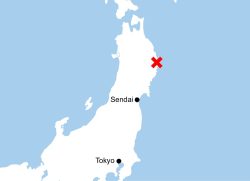15:09 JST, August 23, 2024
Realizing the decommissioning of reactors at the Fukushima No. 1 nuclear power plant is difficult work with no precedent in the world. It will be a long road, but the steady advancement and successful completion of the work is an absolute necessity.
Tokyo Electric Power Company Holdings, Inc. plans to begin removing melted nuclear fuel debris from the No. 2 reactor at the Fukushima No. 1 nuclear power plant. This is the start of the most difficult part of the process of completing the decommissioning by 2051.
The debris was formed in the accident following the Great East Japan Earthquake in March 2011, when nuclear fuel melted in the plant’s Nos. 1-3 reactors and became mixed with other material from the reactors’ internal structure. It is estimated that there is a total of 880 tons of debris.
TEPCO’s plan is to first collect about 3 grams of debris from the No. 2 reactor as a practical trial. Analyzing the composition and structure of even a small amount of the sample will be an indispensable first step in examining potential full-scale debris removal methods in the future.
However, the first day of the work was interrupted when an error was discovered in the preparation stage before starting the extraction. An extendable device resembling a fishing rod was supposed to be inserted through a hole in the side of the reactor, but there was an error in the way the pipes that would be used to push the device in were connected, according to TEPCO.
It is fortunate that no serious incident occurred, but if such an easy mistake cannot be prevented, the implementation of the plan will be difficult. It is hoped that the on-site operation will be inspected once more and that the work will be resumed with a renewed sense of urgency.
The debris removal operation has already been delayed for nearly three years. As the radiation levels at the site are high and the workspace is limited, it is not easy to operate the new machinery accurately by remote control.
Also, it was found that the hole in the side of the reactor was blocked by sediment, which took time to remove. In addition, TEPCO had originally planned to use a larger robotic arm to collect the samples, but its development did not proceed as expected, so the electric company switched to the fishing rod-type device.
It is inevitable that the removal work will continue to face unexpected problems in the future. As long as TEPCO is stepping into unknown territory, it is hoped that the company will put safety first and proceed cautiously with the work. It should not hesitate to revise initial plans as circumstances change.
As long as debris remains, groundwater that comes into contact with it will continue to become contaminated water. Although the release of treated water began a year ago, many tanks for storing it still occupy the premises of the plant.
If this situation continues, it will be impossible to even construct facilities for purposes such as storing the removed debris. It is necessary to prepare for the progress of the decommissioning work by continuing to release the treated water and dismantling the empty tanks.
Japan must mobilize its technological capabilities to completely resolve the aftermath of the nuclear accident that has shocked the world.
(From The Yomiuri Shimbun, Aug. 23, 2024)
"Editorial & Columns" POPULAR ARTICLE
-

Artificial Intelligence Expands Possibilities for Foreign Language Learners
-

Build Intellectual, Physical Strength, As Well As Communicative Power / Japan Should Move from Beneficiary to Shaper of World Order
-

Global Economy in Turmoil: Prevent Free Trade System from Going Adrift / Risks to Financial Markets Must Be Heeded
-

Japan-China Strain Set to Persist as Beijing Officials Self-Interestedly Bash Tokyo; Takaichi Unlikely to Back Down
-

French and German Ambassadors to Japan Call for Democracies to Unite in Defense against Russian Disinformation
JN ACCESS RANKING
-

As Chinese Tourists Shun Japan, Hotels and Stores Suffer
-

Osaka-Kansai Expo’s Economic Impact Estimated at ¥3.6 Trillion, Takes Actual Visitor Numbers into Account
-

Japan Govt Adopts Measures to Curb Mega Solar Power Plant Projects Amid Environmental Concerns
-

BOJ Gov. Ueda: Highly Likely Mechanism for Rising Wages, Prices Will Be Maintained
-

Economic Security Panels Debate Supply Chains, Rare Earths; Participants Emphasize Importance of Cooperation Among Allies




















